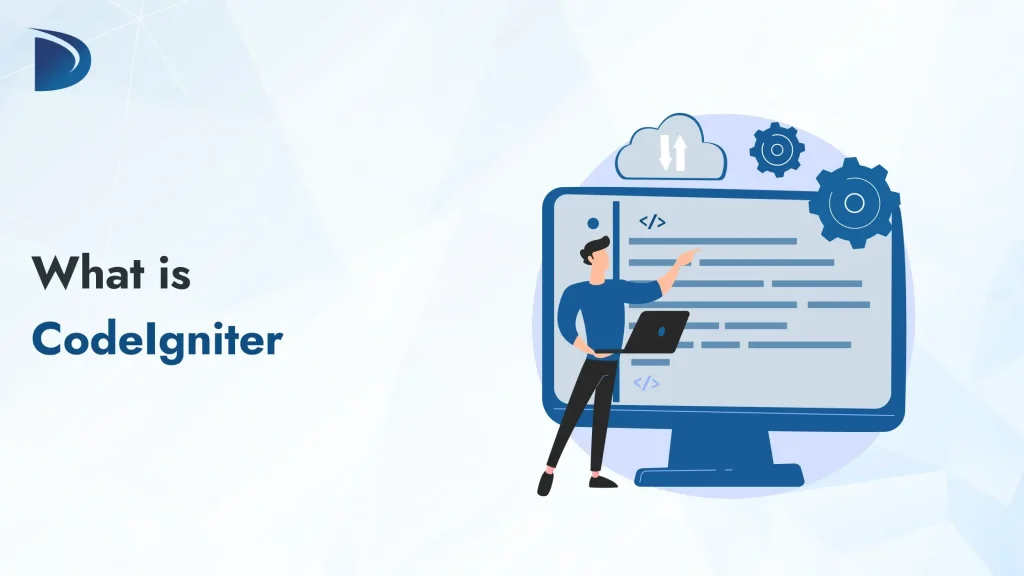Table of Contents
CodeIgniter is a lightweight, open-source PHP framework that helps you build fast and secure web applications with a clean, MVC-like structure. CodeIgniter 4, the current major release, focuses on speed, developer ergonomics, and modern PHP practices such as Composer, PSR-4 autoloading, and a robust HTTP layer.
Key concepts at a glance
- MVC pattern: CodeIgniter organizes code into Models, Views, and Controllers, keeping data access, presentation, and request handling separate and maintainable.
- Routing: Human-readable URLs map to controller methods through defined routes or optional auto-routing.
- HTTP request/response layer: A Request object represents incoming data (GET/POST, headers, files), while a Response object sends output.
- Batteries included: Built-in libraries provide caching, sessions, validation, email, and more. Models include CRUD, validation, and pagination helpers.
- API-ready: Resource routes and ResourceController simplify building REST APIs.
How CodeIgniter works (the simple flow)
- A request hits public/index.php. CodeIgniter boots the framework and loads the configuration.
- Routing determines the controller and action. For example, a route like /products/42 might call Products::show(42). You can use defined routes or auto-routing.
- Filters (optional) run before or after the request. Use filters for authentication, rate limiting, logging, and similar tasks without bloating controllers.
- The controller handles the request. It coordinates tasks, calls models or services, and returns a view or JSON response.
- The model interacts with the database. Models provide CRUD operations, validation, and entities for clean data handling.
- The view renders the output. The response is sent to the browser or API client.
- Caching can improve performance. Page, fragment, or driver-based caching (file, Redis, Memcached) reduces server load.
Why developers choose CodeIgniter
- Performance comes first. A small footprint, efficient routing, and multiple caching options help apps remain responsive even under load.
- Clean project structure. The app directory and default folders keep teams organized from the start.
- Easy to learn, easy to deploy. Clear documentation and sensible defaults enable faster onboarding and shorter delivery cycles.
- Modern PHP features. Composer installation, PSR compliance, testing support, and CLI tools keep workflows up to date.
Common use cases
- Business dashboards, portals, and intranet tools
- RESTful backends for SPAs/mobile apps
- eCommerce catalogs and checkout flows (end-to-end CodeIgniter web development)
- CMS-style sites that need speed plus custom features
- Microservices where low overhead matters
Example: building a simple REST endpoint
With a resource route, you can scaffold CRUD endpoints quickly:
- Define routes with
resource('users') - Extend
ResourceControllerforindex,show,create,update,delete
This keeps controllers thin and consistent while models handle data rules.
When to use CodeIgniter vs. other PHP frameworks
Choose CodeIgniter when you want:
- A lean framework with minimal overhead,
- fast delivery for small-to-medium apps, or
- tight control without heavy conventions.
If you need a vast ecosystem of opinionated packages, a heavier framework might suit but many teams prefer CodeIgniter’s speed and simplicity for greenfield projects and migrations.
Need help?
If you need help planning architecture, migrating from CI3 or legacy PHP, or improving performance, Differenz System can provide a lightweight CodeIgniter engagement (audit → roadmap → fast wins) to help you start shipping quickly.
FAQs
Is CodeIgniter still maintained?
Does CodeIgniter support APIs out of the box?
Yes. Resource routes and controllers make REST endpoints easy, and you can layer authentication and filters.
Can CodeIgniter handle caching and performance tuning?
Yes, use page/fragment caching or drivers like Redis/Memcached to reduce response times.
What PHP version does CodeIgniter 4 require?
CodeIgniter targets modern PHP versions (8.x). Always check the official docs for the exact minimum before starting a project.
Does CodeIgniter use MVC?
Yes. It encourages a Model–View–Controller structure to separate data, presentation, and application logic.
How does routing work in CodeIgniter?
Requests are matched to controller methods via routes you define (or optional auto-routing). You can group routes and attach filters for auth, caching, etc.
Can I build REST APIs with CodeIgniter?
Yes. Resource routes and ResourceController make CRUD-style APIs straightforward, with filters for auth/rate limiting.
Does CodeIgniter have an ORM?
It ships with a Query Builder and Entities (lightweight data objects) rather than a full ORM. You can integrate an external ORM if needed.
How does CodeIgniter handle security?
Core features include CSRF protection, input validation, output escaping, and configurable security headers via filters/middleware.
Can I use front-end frameworks with CodeIgniter?
Absolutely. CI works well as a backend for React, Vue, Angular, or mobile apps via REST/JSON.

